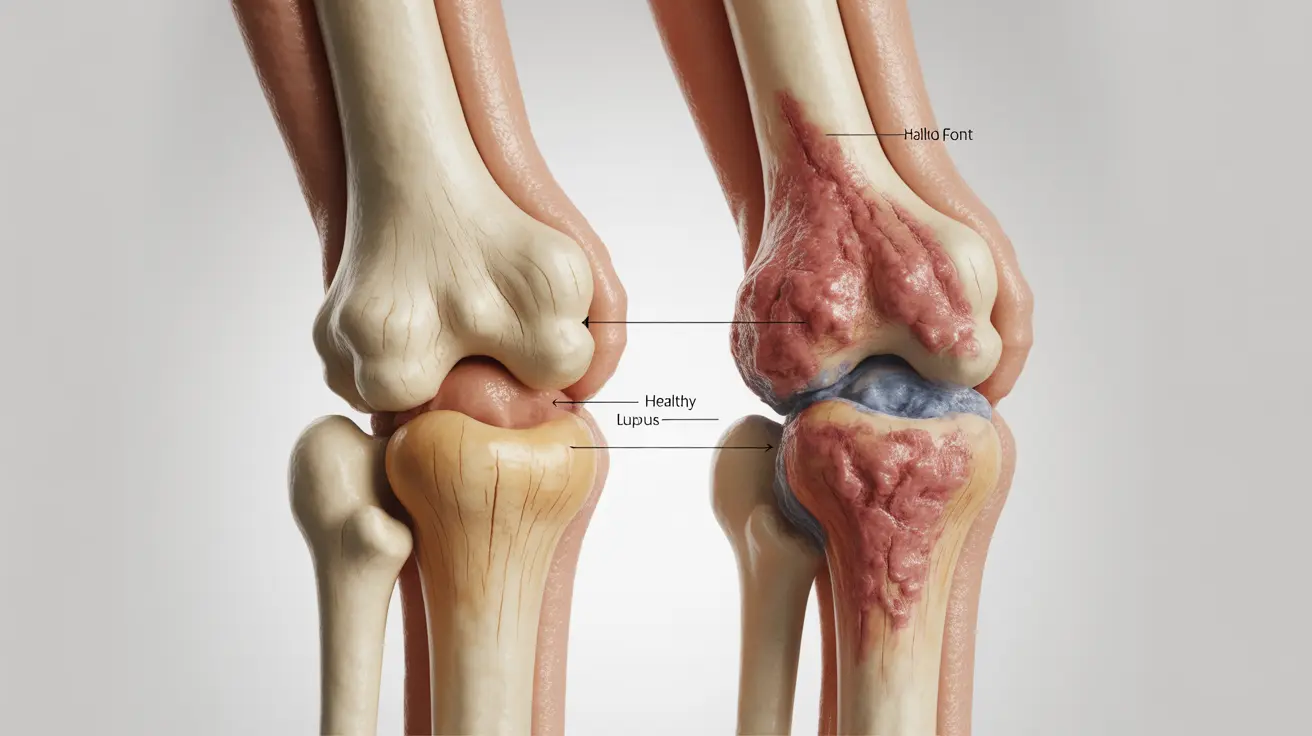Living with lupus can be challenging, especially when joint pain becomes a prominent symptom. Lupus, an autoimmune condition, frequently affects the joints, causing discomfort and limiting mobility for many patients. Understanding how lupus causes joint pain and learning effective management strategies is crucial for maintaining quality of life.
This comprehensive guide explores the relationship between lupus and joint pain, examining treatment options, lifestyle modifications, and long-term implications for joint health. Whether you're newly diagnosed or seeking better ways to manage your symptoms, you'll find valuable information to help navigate this aspect of lupus.
How Lupus Affects Your Joints
Lupus triggers inflammation throughout the body, particularly targeting the joints. This inflammatory response occurs when the immune system mistakenly attacks healthy joint tissue, leading to pain, swelling, and stiffness. The condition most commonly affects the small joints in the hands, wrists, and knees, though any joint can be impacted.
- Morning stiffness that improves with movement
- Symmetrical joint involvement (affecting both sides of the body)
- Warmth and tenderness around affected joints
- Pain that may migrate from one joint to another
- Swelling that can limit range of motion
Medical Treatments for Lupus Joint Pain
Healthcare providers typically recommend a multi-faceted approach to managing lupus joint pain. Treatment options often include:
Medications
- Nonsteroidal anti-inflammatory drugs (NSAIDs)
- Antimalarial medications like hydroxychloroquine
- Corticosteroids for severe flares
- Disease-modifying antirheumatic drugs (DMARDs)
- Biologics for resistant cases
Physical Therapy
- Targeted exercises to strengthen supporting muscles
- Range-of-motion exercises
- Joint protection techniques
- Proper body mechanics education
Lifestyle Management Strategies
Beyond medical treatments, several lifestyle modifications can help manage lupus joint pain:
Exercise and Movement
- Low-impact aerobic exercises like swimming or cycling
- Gentle stretching routines
- Yoga or tai chi
- Walking on even surfaces
Rest and Joint Protection
- Using assistive devices when needed
- Taking breaks during activities
- Modifying daily tasks to reduce joint stress
- Getting adequate sleep
Long-term Joint Health Considerations
While lupus joint pain can be concerning, early intervention and proper management can help prevent or minimize permanent damage. Regular monitoring by healthcare providers, adherence to treatment plans, and maintaining a healthy lifestyle all contribute to better long-term outcomes.
Frequently Asked Questions
Does lupus cause joint pain and which joints are most commonly affected?
Yes, lupus commonly causes joint pain, primarily affecting the fingers, wrists, elbows, knees, and ankles. The pain typically occurs symmetrically on both sides of the body and may be accompanied by swelling and stiffness.What are the best medications to manage joint pain caused by lupus?
The most effective medications include NSAIDs for mild pain, antimalarial drugs like hydroxychloroquine for long-term management, and corticosteroids or DMARDs for more severe cases. Treatment plans are typically personalized based on symptom severity and individual response.How can lifestyle changes and exercise help relieve lupus-related joint pain?
Regular low-impact exercise, proper rest, stress management, and maintaining a healthy weight can significantly reduce joint pain. Gentle activities like swimming, walking, and yoga can help maintain flexibility while protecting joints from excessive stress.Can lupus joint pain lead to permanent joint damage or arthritis?
Yes, without proper treatment, lupus can potentially cause permanent joint damage. However, early intervention and consistent management can help prevent or minimize long-term joint problems.What are the possible side effects of lupus medications used for joint pain treatment?
Side effects vary by medication type. NSAIDs may cause stomach issues, antimalarials can affect vision, and corticosteroids may lead to weight gain and bone density loss. Regular monitoring by healthcare providers helps manage these risks effectively.




